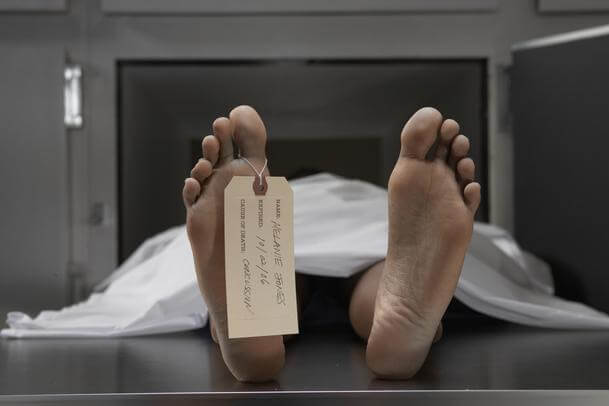 Ex Parte Neal Hampton Robbins – Tex. Crim. App. , June 29, 2011
Ex Parte Neal Hampton Robbins – Tex. Crim. App. , June 29, 2011
In 1999, Neal Robbins was convicted of capital murder and sentenced to life in prison for the death of his girlfriend’s 17 month-old child. The cause of death as reported by the medical examiner was asphyxiation by compression. The medical examiner testified to her theory at trial and despite contrary evidence that the compression wounds may have resulted from adult administered CPR, the jury convicted Robbins of capital murder.
In 2007, at the urging of one of Robbins’s acquaintances, the original findings of the medical examiner were reviewed by the Harris County Medical Examiner’s Office. The Deputy Chief Medical Examiner disagreed with the findings and the trial testimony of the original medical examiner. The autopsy report was then amended to reflect that the cause and manner of death was “undetermined.” Eventually, the original medical examiner was asked to review her prior findings. In a letter to the district attorney, she stated:
I believe that there are unanswered questions as to why the child died, and I still feel that this is a suspicious death of a young child. Given my review of all the material from the case file and having had more experience in the field of forensic pathology, I now feel that an opinion for a cause and manner of death of “undetermined” is best for this case.
She went on to explain that the bruises she originally equated with asphyxiation by compression could have resulted from aggressive CPR and other efforts to assist the child.
Armed with the recantation of the chief government witness, Robbins filed an application for writ of habeas corpus in June of 2007. The State did not oppose the application and recommended that Robbins be given a new trial “because his due process rights to a fair trial and impartial jury were violated.” In response, the trial court appointed yet another medical to review the evidence and offer an opinion. This time, the chairman of the Department of Pathology at Baylor College of Medicine opined that the original determination of the cause of death, as presented in the capital trial, could not be supported by the evidence.
Not satisfied with this opinion, the trial court ordered one last review by another pathologist. This last and final pathologist stated that it was her opinion that the child’s death was a homicide and that the manner of death was asphyxia by suffocation (a theory not presented at the original trial). After this finding, the State withdrew its recommendation that a new trial be granted, but agreed not to oppose the request for a new trial.
After an evidentiary hearing into the cause of the child’s death, the trial court recommended that the Texas Court of Criminal Appeals grant Robbins’s request for a new trial.
A slim majority (5-4) of the CCA was not equally convinced. Characterizing Robbins’s application as a “bare innocence claim,” the CCA explained that it must “look to see whether there is ‘clear and convincing evidence that no reasonable juror would have convicted him in light of the new evidence.’”
The CCA concluded that:
[The original medical examiner] did not entirely repudiate her testimony. Although she can no longer stand by her more definite trial testimony, it remains at least possible that [the child’s] death could have occurred as [the medical examiner] originally testified. Thus, [her] re-evaluation does not void her trial testimony. The jury could have considered [her] “undetermined” opinion and still found Applicant guilty, especially in light of all of the other evidence adduced at trial. Applicant has, therefore, failed to make the requisite showing “by clear and convincing evidence that no reasonable juror would have convicted him in light of” [the medical examiner’s] re-evaluation.
Application for writ of habeas corpus is denied.
Judge Price Concurred.
Judge Cochran, joined with Judges Womack and Johnson dissented, stating:
I certainly agree [that]…applicant has not established his actual innocence-not even close. But, given the inexperienced trial and habeas judge’s legitimate and serious concerns about the impact of [the medical examiner’s] testimony at trial on the critical and hotly disputed issue of [the child’s] cause of death, I agree that applicant did not receive a fundamentally fair trial based upon reliable scientific evidence (or the honest admission that science cannot resolve the critical issue.)
Judge Alcala also dissented in a separate opinion, stating that she would grant relief because Robbins “was denied due process of law by the State’s use of false testimony to obtain his conviction.”
If only Robbins had been tried in Florida by Casey Anthony’s jury, this entire appeal could have been averted.

 While the 5th Circuit case linked below has nothing to do with criminal law and procedure, it has everything to do with ridiculous Texas shenanigans. Volokh linked it first. I found it too good not to note. Read the case for yourself. Don’t pass up the footnotes. It is utter greatness.
While the 5th Circuit case linked below has nothing to do with criminal law and procedure, it has everything to do with ridiculous Texas shenanigans. Volokh linked it first. I found it too good not to note. Read the case for yourself. Don’t pass up the footnotes. It is utter greatness.




 In September of 2010, the 3rd Court of Appeals (Austin) reversed the sexual assault conviction of Mark Barshaw because the trial court allowed the following testimony of an MHMR expert regarding the truthfulness of mentally retarded individuals:
In September of 2010, the 3rd Court of Appeals (Austin) reversed the sexual assault conviction of Mark Barshaw because the trial court allowed the following testimony of an MHMR expert regarding the truthfulness of mentally retarded individuals: Investigating a reported shooting, the police knock on the door to a home that is answered by an adolescent (a minor). Can the minor give the police permission to enter the home? Must the police ask whether the minor lives in the home? Should the police ask to speak to an adult? These issues were considered by the Texas Court of Criminal Appeals in
Investigating a reported shooting, the police knock on the door to a home that is answered by an adolescent (a minor). Can the minor give the police permission to enter the home? Must the police ask whether the minor lives in the home? Should the police ask to speak to an adult? These issues were considered by the Texas Court of Criminal Appeals in 
 Here’s the scenario – man is caught entering a home through a window that he broke. A female occupant of the home comes face-to-face with him and he then runs away. Is there evidence that the man was attempting to unlawfully enter the woman’s home? Certainly. Is there evidence to support the notion that he intended to commit a theft (or other felony) therein? That’s the question.
Here’s the scenario – man is caught entering a home through a window that he broke. A female occupant of the home comes face-to-face with him and he then runs away. Is there evidence that the man was attempting to unlawfully enter the woman’s home? Certainly. Is there evidence to support the notion that he intended to commit a theft (or other felony) therein? That’s the question.
 Supreme Court Case Review –
Supreme Court Case Review – 
 Here’s an excerpt from the Texas Court of Criminal Appeals’ majority (5-3) opinion in
Here’s an excerpt from the Texas Court of Criminal Appeals’ majority (5-3) opinion in 
 United States v. Cantu
United States v. Cantu





